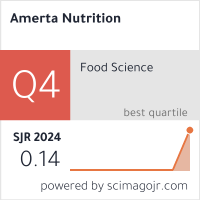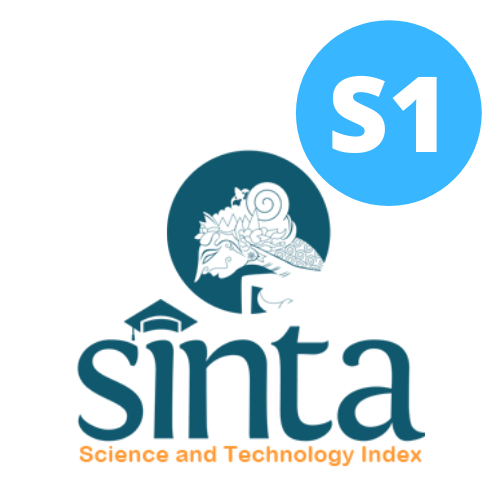Breastfeeding as Protective Nutrition: The Immunological Foundation for Infants
Pemberian ASI Sebagai Gizi Pelindung: Aspek Imunologi Bayi
Background: Breastfeeding, a crucial foundation for infant health, provides essential protective nutrition and a complex array of immune-protective factors. Breastfeeding as a natural, protective, and ethical practice is very important to support the health of infants and, by extension, the health of future generations.
Objectives: The author emphasizes the biological components of breast milk as physiological protection for infant immunity and highlights the importance of breastfeeding promotion and protection within ideological and cultural contexts.
Methods: A comprehensive literature review was performed using online database from Google Scholar to explore the immunological foundation of breastfeeding from original research articles published in recent 5 years.
Discussions: Maternal health and maternal immunity are transferred to the infant through breast milk, providing a temporary but significant shield against pathogens. Ethical and philosophical dimensions of breastfeeding as an intrinsic maternal practice that extends beyond nutrition to embody intergenerational health protection.
Conclusions: The role of breastfeeding as a natural, protective, and ethical practice is very important to support the health of infants and, by extension, the health of future generations. Philosophically and theoretically grounded strategies are effective in enhancing exclusive breastfeeding rates, particularly in treatments focused on breastfeeding education, empowerment, and counselling. Assistance in the initial days and weeks following delivery is crucial, as this timeframe is critical for the effective establishment of lactation.
Stelzer, I. A. et al. Vertically transferred maternal immune cells promote neonatal immunity against early life infections. Nat. Commun. 12, 1–14 (2021). https://doi.org/10.1038/s41467-021-24719-z.
Borghesi, A., Marzollo, A., Michev, A. & Fellay, J. Susceptibility to infection in early life: a growing role for human genetics. Hum. Genet. 139, 733–743 (2020). https://doi.org/10.1007/s00439-019-02109-2.
Lackey, K. A. et al. Breastfeeding beyond 12 months: is there evidence for health impacts? Annu. Rev. Nutr. 41, 283–308 (2021). https://doi.org/10.1146/annurev-nutr-120920-012619.
Muro-Valdez, J. C. et al. Breastfeeding-related health benefits in children and mothers: vital organs perspective. Medicina 59, 1–14 (2023). https://doi.org/10.3390/medicina59091570.
Pérez-Escamilla, R. Breastfeeding in the 21st century: how we can make it work. Soc. Sci. Med. 244, 112599 (2020). https://doi.org/10.1016/j.socscimed.2019.112599.
Pratiwi, A., Adi, M. S., Udijono, A. & Martini, M. Hubungan antara sosial budaya pada masyarakat dengan perilaku pemberian ASI eksklusif: systematic review. J. Kesehat. Masy. 9, 510–517 (2021). https://doi.org/10.14710/jkm.v9i4.510-517.
Nuzzi, G., Di Cicco, M. E. & Peroni, D. G. Breastfeeding and allergic diseases: what’s new? Children 8, 1–14 (2021). https://doi.org/10.3390/children8050384.
Di Benedetto, M. G. et al. Nutritional and immunological factors in breast milk: a role in the intergenerational transmission from maternal psychopathology to child development. Brain Behav. Immun. 85, 57–68 (2020). https://doi.org/10.1016/j.bbi.2019.05.032.
Kiełbasa, A., Gadzała-Kopciuch, R. & Buszewski, B. Cytokines-biogenesis and their role in human breast milk and determination. Int. J. Mol. Sci. 22, 6238 (2021). https://doi.org/10.3390/ijms22126238.
Kowalczyk, P. et al. The lactoferrin phenomenon—a miracle molecule. Molecules 27, 1–16 (2022). https://doi.org/10.3390/molecules27092747.
Yi, D. Y. & Kim, S. Y. Human breast milk composition and function in human health: from nutritional components to microbiome and microRNAs. Nutrients. 13, 3094 (2021). https://doi.org/10.3390/nu13093094.
Hegar, B. et al. The role of two human milk oligosaccharides, 2'-fucosyllactose and lacto-N-neotetraose, in infant nutrition. Pediatr. Gastroenterol. Hepatol. Nutr. 22, 330-340 (2019). https://doi.org/10.5223/pghn.2019.22.4.330.
Laouar, A. Maternal leukocytes and infant immune programming during breastfeeding. Trends Immunol. 41, 225-239 (2020). https://doi.org/10.1016/j.it.2020.01.005.
Grobben, M. et al. Decreased passive immunity to respiratory viruses through breastfeeding. Hum. Milk. 6. (2022).
Langel, S. N., Otero, C. E., Martinez, D. R. & Permar, S. R. Maternal gatekeepers: how maternal antibody Fc characteristics influence passive transfer and infant protection. PLoS Pathog. 16, e1008303 (2020). https://doi.org/10.1371/journal.ppat.1008303.
Pierzynowska, K., Woliński, J., Weström, B. & Pierzynowski, S. G. Maternal immunoglobulins in infants-are they more than just a form of passive immunity? Front. Immunol. 11, 610371 (2020). https://doi.org/10.3389/fimmu.2020.610371.
Tlaskalov√°-Hogenov√°, H., Kverka, M. & Hrd√Ω, J. Immunomodulatory components of human colostrum and milk. Nestle Nutr. Inst. Workshop Ser. 94, 38-47 (2020). https://doi.org/10.1159/000503763.
Thai, J. D. & Gregory, K. E. Bioactive factors in human breast milk attenuate intestinal inflammation during early life. Nutrients 12, 581 (2020). https://doi.org/10.3390/nu12020581.
Masi, A. C. & Stewart, C. J. Untangling human milk oligosaccharides and infant gut microbiome. iScience 25, 103542 (2022). https://doi.org/10.1016/j.isci.2021.103542.
Kartjito, M. S. et al. Defining the relationship of gut microbiota, immunity, and cognition in early life-a narrative review. Nutrients 15, 2747 (2023). https://doi.org/10.3390/nu15122747.
North, K., Gao, M., Allen, G. & Lee, A. C. Breastfeeding in a Global Context: Epidemiology, Impact, and Future Directions. Clinical Therapeutics 44, (2021). https://doi.org/10.1016/j.clinthera.2021.11.017.
Branger, B. et al. Breastfeeding and respiratory, ear and gastro-intestinal infections, in children, under the age of one year, admitted through the paediatric emergency departments of five hospitals. Front. Pediatr. 10, 1–12 (2023). https://doi.org/10.3389/fped.2022.1086493.
Hummel, S. et al. Associations of breastfeeding with childhood autoimmunity, allergies, and overweight: the Environmental Determinants of Diabetes in the Young (TEDDY) study. Am. J. Clin. Nutr. 114, 134–142 (2021). https://doi.org/10.1093/ajcn/nqab027.
Prasadajudio, M. et al. Disease-related malnutrition in pediatric patients with chronic disease: a developing country perspective. Curr. Dev. Nutr. 7, 100021 (2023). https://doi.org/10.1016/j.cdnut.2022.100021.
Wrottesley, S. V. et al. Nutritional status of school-age children and adolescents in low- and middle-income countries across seven global regions: a synthesis of scoping reviews. Public Health Nutr. 26, 63–95 (2023). https://doi.org/10.1017/S1368980022000350.
Dinleyici, M., Barbieur, J., Dinleyici, E. C. & Vandenplas, Y. Functional effects of human milk oligosaccharides (HMOs). Gut Microbes 15, 2186115 (2023). https://doi.org/10.1080/19490976.2023.2186115.
Lokossou, G. A. G., Kouakanou, L., Schumacher, A. & Zenclussen, A. C. Human breast milk: from food to active immune response with disease protection in infants and mothers. Front. Immunol. 13, 849277 (2022). https://doi.org/10.3389/fimmu.2022.849277.
Meek, J. Y. et al. Technical report: breastfeeding and the use of human milk. Pediatrics 150, e2022057986 (2022). https://doi.org/10.1542/peds.2022-057986.
Perez, C. M. “The milk is love”: understanding mothers’ emotional attachment to breastmilk. Undergraduate Honors Theses. University of Central Florida (2020). https://stars.library.ucf.edu/honorstheses/845/.
Basrowi, R. W. et al. Breastfeeding knowledge, attitude, and practice among white-collar and blue-collar workers in Indonesia. J. Korean Med. Sci. 34, e303 (2019). https://doi.org/10.3346/jkms.2019.34.e303 .
Ardhani, S., Perdani, R. & Tjiptaningrum, A. Relationship Between Mother Knowledge, Social Culture and Information of Health Workers in Practice of Giving Early Food with The Incidence of Acute Diarrhea in Infant. Journalofmedula. 10 (2020). http://www.journalofmedula.com/index.php/medula/article/view/86/5.
Rahayu D, Atmojo DS. Social Cultural Perspectives in Successful Exclusive Breastfeeding: Literature Review. Int Conf Nurs Public Heal. 2 (2022).
Patil DS, Pundir P, Dhyani VS, Krishnan JB, Parsekar SS, D'Souza SM, et al. A mixed-methods systematic review on barriers to exclusive breastfeeding. Nutr Health. 26 (2024). https://doi.org/10.1177/0260106020942967.
Basrowi RW, Darus F, Partiwi IGAN, Sutanto LB, Sulistomo A, Soemarko DS, et al. The Strategic Effort to Ensure Successful Breastfeeding Practice in the Workplace: An Indonesian Expert Opinion. Open Public Health J. 17 (2024). https://doi.org/10.2174/1874944502417011278.
Saputri NS, Spagnoletti BRM, Morgan A, Wilopo SA, Singh A, McPake B, et al. Progress towards reducing sociodemographic disparities in breastfeeding outcomes in Indonesia: A trend analysis from 2002 to 2017. BMC Public Health. 20 (2020). https://doi.org/10.1186/s12889-020-09194-3.
Basrowi RW, Khoe LC, Yosia M. Prevalence of Breastfeeding and Its Supporting Factors During Covid-19 Pandemic in Indonesia. Gen Med. 23 (2023).
Basrowi RW, Sastroasmoro S, Sulistomo AW, Bardosono S, Hendarto A, Soemarko DS, et al. Developing a workplace lactation promotion model in Indonesia using Delphi technique. Arch Public Heal. 76 (2018). https://doi.org/10.1186/s13690-018-0312-2.
Modak A, Ronghe V, Gomase KP. The Psychological Benefits of Breastfeeding: Fostering Maternal Well-Being and Child Development. Cureus. 15 (2023). https://doi.org/10.7759/cureus.46730.
Amoo TB, Popoola T, Lucas R. Promoting the practice of exclusive breastfeeding: a philosophic scoping review. BMC Pregnancy Childbirth. 22 (2022). https://doi.org/10.1186/s12884-022-04689-w.
Copyright (c) 2025 Amerta Nutrition

This work is licensed under a Creative Commons Attribution-ShareAlike 4.0 International License.
AMERTA NUTR by Unair is licensed under a Creative Commons Attribution-ShareAlike 4.0 International License.
1. The journal allows the author to hold the copyright of the article without restrictions.
2. The journal allows the author(s) to retain publishing rights without restrictions
3. The legal formal aspect of journal publication accessibility refers to Creative Commons Attribution Share-Alike (CC BY-SA).
4. The Creative Commons Attribution Share-Alike (CC BY-SA) license allows re-distribution and re-use of a licensed work on the conditions that the creator is appropriately credited and that any derivative work is made available under "the same, similar or a compatible license”. Other than the conditions mentioned above, the editorial board is not responsible for copyright violation.












































